Lines, Rays, and Angles
Our geometry unit is in full swing! Here are some of the vocabulary terms that we use.
A point is an exact position on a plane surface.
A line is a collection of points along a straight path with no end points.
A ray is a line with a single end point that goes on and on in one direction.
Parallel Lines are two lines that remain the same distance apart at all times and never intersect.
Perpendicular Lines are two lines that intersect and from right angles.
A figure is symmetric (or has symmetry) if it can be folded on a line to form two equal (congruent) halves that fit on top of each other.
Line of symmetry is the fold line of a symmetrical figure. A figure can have one, many, or no lines of symmetry.
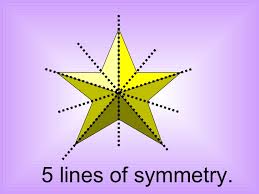

An angle is the intersection of two rays with a common vertex or endpoint. An angle measures the amount of turn of the rays.

There are four types of angles that we have learned about.
An acute angle is an angle whose measure is less than 90°.

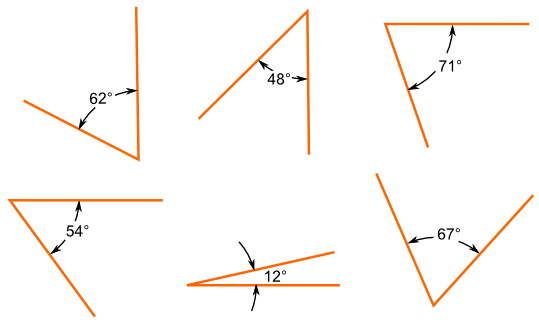
A right angle is an angle whose measure is 90°.


An obtuse angle is an angle whose measure is more than 90°, but less than 180°.

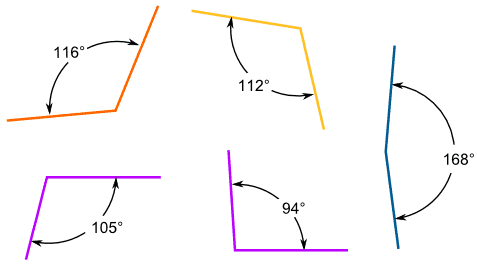
A straight angle is an angle whose measure is 180°.

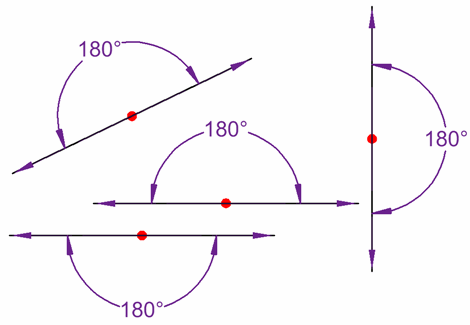
Remember that an angle is named using three letters, where the middle letter corresponds to the vertex of the angle. The angle below is ∠ABC or ∠CBA. If it is perfectly clear which angle is being named, an angle may be referred to by its vertex letter alone, such as ∠B.
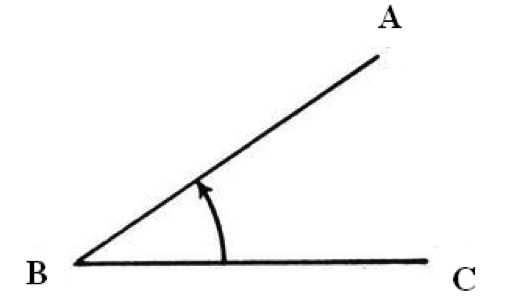
Here are a couple of fun website that allows you to play around with angles:
Angles
Name that Angle
Check out our angle song:
Angle Song
Watch this video to get a better understanding of the differences between these geometry terms.
Geometry Terms
Here are some ways to practice the geometry terms:
Geometry Term Practice
Lines, line segments, and rays practice
Ask your kiddo to show you the dance moves we came up with for these terms.
A point is an exact position on a plane surface.
A line is a collection of points along a straight path with no end points.
A line segment is a part of a line that contains every point on the line between its end points.
A ray is a line with a single end point that goes on and on in one direction.
Parallel Lines are two lines that remain the same distance apart at all times and never intersect.
Perpendicular Lines are two lines that intersect and from right angles.
Intersecting Lines meet or cross each other.
A figure is symmetric (or has symmetry) if it can be folded on a line to form two equal (congruent) halves that fit on top of each other.
Line of symmetry is the fold line of a symmetrical figure. A figure can have one, many, or no lines of symmetry.

An angle is the intersection of two rays with a common vertex or endpoint. An angle measures the amount of turn of the rays.

There are four types of angles that we have learned about.
An acute angle is an angle whose measure is less than 90°.

A right angle is an angle whose measure is 90°.


An obtuse angle is an angle whose measure is more than 90°, but less than 180°.

A straight angle is an angle whose measure is 180°.


Remember that an angle is named using three letters, where the middle letter corresponds to the vertex of the angle. The angle below is ∠ABC or ∠CBA. If it is perfectly clear which angle is being named, an angle may be referred to by its vertex letter alone, such as ∠B.

Here are a couple of fun website that allows you to play around with angles:
Angles
Name that Angle
Check out our angle song:
Angle Song
Watch this video to get a better understanding of the differences between these geometry terms.
Geometry Terms
Here are some ways to practice the geometry terms:
Geometry Term Practice
Lines, line segments, and rays practice
Ask your kiddo to show you the dance moves we came up with for these terms.









No comments:
Post a Comment